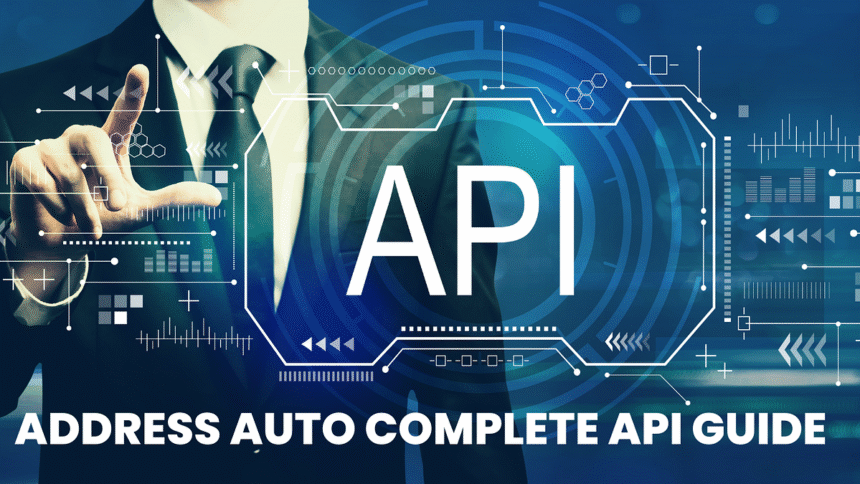In today’s fast-paced digital world, providing an efficient user experience is critical for businesses that require user input for addresses. Address autocomplete functionality is a crucial tool that enhances the way users interact with forms. By integrating an address autocomplete feature, companies can streamline the data entry process, improve accuracy, and ultimately save time and resources. This guide will walk you through the benefits, applications, and considerations when implementing these essential features.
What is Address Autocomplete?
Address autocomplete is a feature that suggests possible addresses as a user begins typing their address into a form field. This feature reduces the amount of typing required, minimizes user frustration, and provides standardized address inputs, which helps avoid mistakes. Address autocomplete generally pulls from an extensive database, providing users with relevant suggestions based on their input.
Benefits of Address Autocomplete
- Improved User Experience: By minimizing the typing effort required from users, address autocomplete enhances the experience, making it more enjoyable and efficient.
- Increased Accuracy: Users are less likely to make typos or format errors, meaning the address data collected is more reliable.
- Time Efficiency: By saving users time, businesses can see a decrease in form abandonment rates, increasing conversion rates.
- Better Data Management: Standardized addresses collected through autocomplete features facilitate seamless integration into databases and marketing systems.
What is an Address Lookup API?
An address lookup API enables systems to verify, standardize, and enrich address information. It can provide additional details such as geo-coordinates, delivery options, or even demographic information. By leveraging an address lookup API, businesses can enhance their data collection methods, ensuring they have accurate, real-time, and validated address information at their fingertips.
Applications of Address Autocomplete and Address Lookup APIs
Both address autocomplete and address lookup APIs can be used across various sectors and applications. Here are some common use cases:
- E-commerce: Online retailers can utilize these tools during the checkout process to reduce cart abandonment caused by long or complicated address entry forms.
- Real Estate: Agencies can streamline property inquiries and listing submissions by ensuring addresses are accurate and formatted correctly.
- Delivery Services: Logistic companies can improve delivery accuracy and efficiency by ensuring they have validated address information.
- Marketing: Businesses can use validated addresses for direct mail campaigns or demographic analysis to enhance targeted marketing efforts.
Key Considerations When Implementing Address Autocomplete
While the benefits of address autocomplete and lookup APIs are clear, there are a few considerations you should keep in mind during implementation:
- User Privacy: Always comply with data privacy laws, especially when handling personal information.
- Database Quality: The effectiveness of address autocomplete is directly related to the quality of the underlying data. Ensure your database is regularly updated and accurate.
- Customization Options: Consider offering customized suggestions that match the specific needs of your customers or sector.
- Testing: Thoroughly test the functionality across different devices and platforms to confirm that it enhances rather than hinders the user experience.
Integrating Address Autocomplete into Your Workflow
Implementing address autocomplete into your existing systems may seem daunting, but with the right strategy and tools in place, it can be a straightforward process. Here are some steps to get started:
- Choose the Right API: Select an address autocomplete and lookup API provider that suits your business needs, taking into consideration factors like database size, geographic coverage, pricing, and support.
- Plan Your Integration: Work with your developers to outline how the API will integrate with your existing systems, ensuring it complements your workflow without causing disruptions.
- Configure and Test: Set up the API and conduct thorough testing to ensure it performs well under various scenarios and provides accurate and relevant suggestions.
- Gather Feedback: After launching, gather user feedback to optimize the implementation and ensure it meets user needs effectively.
Conclusion
The integration of address autocomplete and an address lookup API can significantly enhance the user experience, streamline operations, and provide valuable data insights for businesses across various sectors. By prioritizing user-centered design and ensuring accuracy and reliability, companies can reap the benefits of these essential tools in their digital offerings.
Incorporating these features, whether for an e-commerce site or a service-based application, boosts conversions and fulfills essential operational needs, leading to greater satisfaction for both users and businesses. Address autocomplete and lookup services are not just nice-to-haves; they are essential components for any organization aiming to thrive in today’s competitive market.







